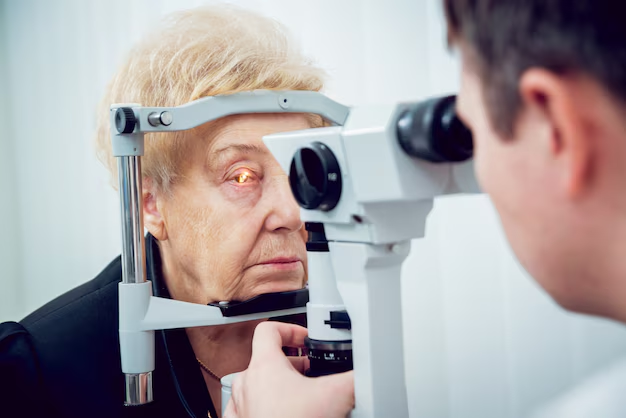Safeguarding Your Vision: Tips to Prevent Cataracts
Cataracts—a clouding of the eye's lens—are a leading cause of vision impairment globally. For many, the journey to cataract formation is a gradual one, often intertwined with aging. However, age doesn't have to preordain cataracts. Many are surprised to learn that proactive steps can help delay, and occasionally prevent, cataracts. By prioritizing eye health, you can enjoy clearer vision for longer. Let's delve into the effective strategies to prevent cataracts and maintain optimal eye health.
Understanding Cataracts
Cataracts form when proteins in the eye's lens start to break down and clump together, causing cloudiness. This can lead to blurred vision, glare sensitivity, and color perception challenges. While aging is the most common cause, cataracts can also result from other factors such as genetics, medical conditions like diabetes, and even certain medications.
Early Signs and Symptoms
Spotting cataracts early can be a challenge. They often begin as minor nuisances that gradually grow into significant impediments. Here are some signs to watch for:
- Blurry Vision: A progressive loss of clarity.
- Glare Sensitivity: Discomfort with bright lights or sunlight.
- Color Distortion: Colors may appear faded or yellowed.
- Double Vision: This can occur in one eye or both.
- Night Vision Issues: Difficulty driving or seeing in low-light conditions.
Recognizing these signs can prompt early intervention and better outcomes.
Proven Strategies to Prevent Cataracts
While there's no guaranteed way to prevent cataracts altogether, adopting certain lifestyle adjustments can significantly reduce risk factors.
1. Prioritize a Nutritious Diet
Diet plays a crucial role in eye health. Consuming foods rich in antioxidants can benefit the lens by reducing oxidative stress.
- Leafy Greens and Colorful Veggies: Foods like spinach, kale, and carrots are packed with lutein and zeaxanthin—antioxidants known to support eye health.
- Omega-3 Fatty Acids: Incorporate fish like salmon, mackerel, and walnuts to promote overall eye wellness.
- Vitamin C-Rich Foods: Citrus fruits, bell peppers, and strawberries help keep your lens healthy.
2. Protect Your Eyes from UV Rays
Exposure to ultraviolet (UV) rays can accelerate cataract formation. Safeguard your eyes by:
- Wearing Sunglasses: Opt for those with 100% UV protection—consider wraparound styles for full coverage.
- Using a Wide-Brimmed Hat: This offers an additional layer of protection against direct sunlight.
3. Maintain a Healthy Lifestyle
Certain lifestyle choices can influence cataract development:
- Quit Smoking: Smoking significantly increases cataract risk due to its oxidative effects on lens proteins.
- Limit Alcohol Consumption: Excessive alcohol can contribute to cataract progression.
- Manage Your Weight and Chronic Conditions: Conditions like diabetes elevate cataract risk, so maintaining a healthy weight and controlling blood sugar is crucial.
4. Regular Eye Checkups
Routine eye examinations are vital for early detection. An ophthalmologist can monitor changes in your lens and recommend interventions if necessary.
5. Control Blood Pressure and Sugar Levels
High blood pressure and uncontrolled diabetes heighten the risk of cataract development. Keeping these conditions in check helps preserve eye health.
6. Avoid Prolonged Use of Corticosteroids
While sometimes necessary, long-term use of corticosteroids has been linked to a higher incidence of cataracts. Discuss alternative treatments with your healthcare provider when feasible.
Intriguing Connections: Related Eye Health Matters
While cataracts are a significant concern, other eye health issues often arise concurrently or share risk factors. Understanding these can help you make more informed decisions about your eye care.
Blue Light Exposure
With the increased use of digital devices, blue light exposure has become a prominent topic in eye health discussions. While not directly linked to cataracts, blue light can contribute to digital eye strain, prompting users to seek out protective measures.
Age-Related Macular Degeneration (AMD)
The habits and dietary choices recommended to prevent cataracts can also reduce the risk of AMD. This condition affects central vision and is a leading cause of blindness among older adults.
Glaucoma Awareness
Although distinct from cataracts, glaucoma also poses a threat to eye health. Regular checkups can simultaneously screen for both, ensuring comprehensive eye care.
Eye Health: An Ongoing Journey
Your eyes are invaluable, and safeguarding their health is a lifelong journey. By prioritizing proactive measures today, you set the foundation for a clearer tomorrow. Here’s a quick summary of actionable tips:
👁️ Quick Eye Health Prevention Tips:
- 👓 Shield Your Eyes: Always wear UV-protective sunglasses and hats.
- 🥦 Fuel with Nutrition: Emphasize leafy greens, fruits, and omega-3-rich foods.
- 🚭 Quit Smoking: Reduce oxidative stress and improve eye health.
- 🩺 Regular Checkups: Detect early changes with routine eye exams.
- 🏃♀️ Stay Active: Manage weight and chronic health conditions diligently.
- 🍷 Moderate Alcohol: Limit alcohol to prevent risk escalation.
By embracing these practices, you're not just preventing cataracts; you're investing in clear vision and vibrant health as you age. Remember, your eyes reflect your overall well-being—treat them with care, and they’ll serve you well for years to come.
